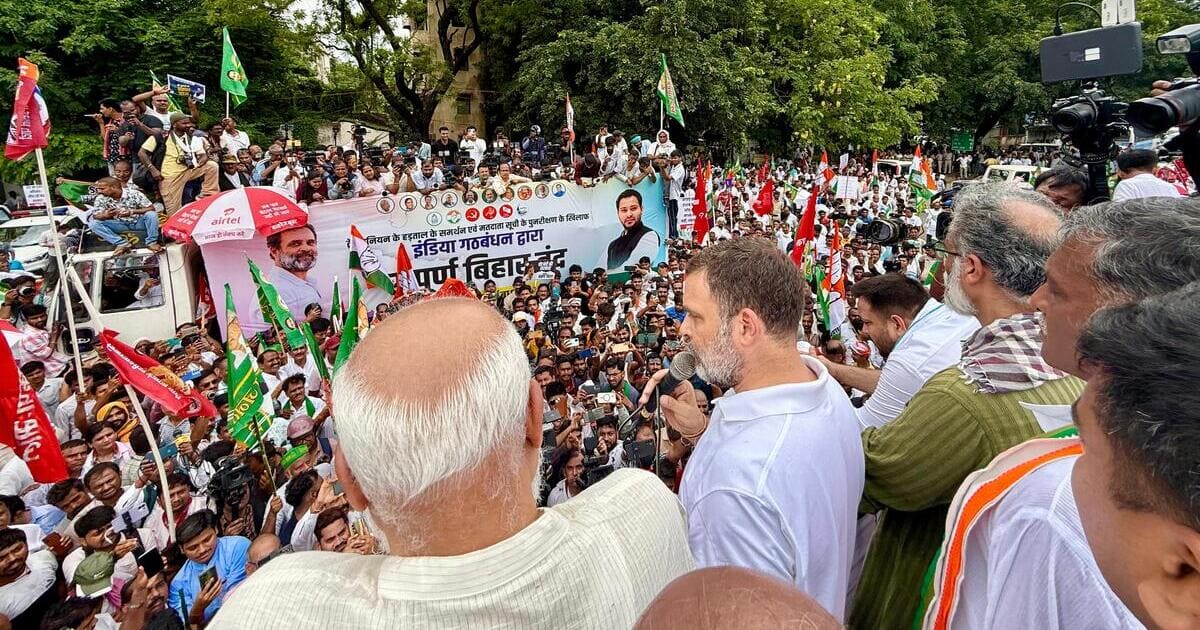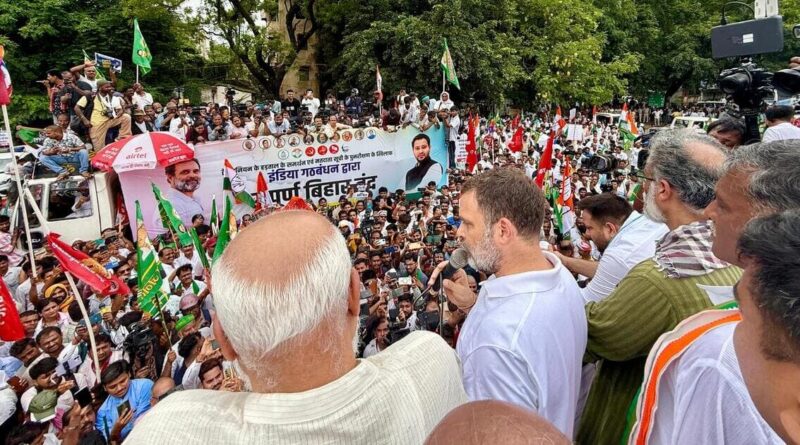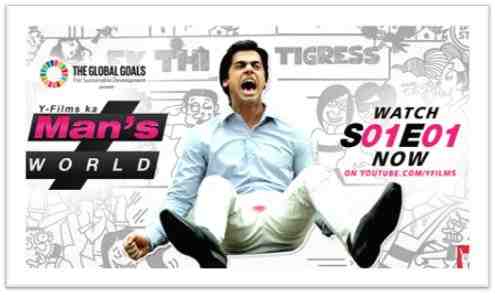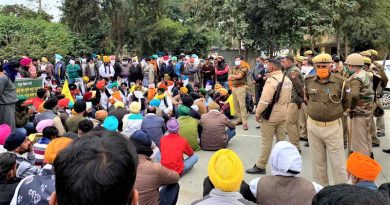Editorial Analysis: Rahul Gandhi’s Allegations Against the Modi Government

Editorial Analysis: Rahul Gandhi’s Allegations Against the Modi Government
Rahul Gandhi’s strategic objective is to frame the BJP’s actions not as routine politics, but as a systemic “wholesale attack on the democratic system in India.”
By Rakesh Raman
New Delhi | October 3, 2025
1.0 Introduction and Context of Allegations
This brief dissects the recent allegations made by Leader of Opposition (LoP) Rahul Gandhi against the Bharatiya Janata Party (BJP) government, which have opened a new front in the protracted political conflict between India’s ruling party and its chief opposition. The analysis that follows will objectively present his core accusations regarding the state of Indian democracy and economy, the BJP’s formal response, and the broader political context, providing a comprehensive overview for strategic assessment.
The precipitating event was an interaction Rahul Gandhi held at EIA University in Colombia during his four-day tour of South America. His remarks, covering a range of topics from democratic principles to economic policy, have ignited a significant political debate within India. We will now examine the specific points of contention raised by Gandhi.
2.0 Deconstruction of Rahul Gandhi’s Core Criticisms
This section provides a deep dive into the specific charges leveled by Rahul Gandhi. Understanding the three distinct pillars of his critique—the state of democracy, economic policies, and the ruling party’s ideology—is crucial for grasping the strategic nature of his political offensive.
2.1 The “Wholesale Attack on Democracy”
Gandhi’s strategic objective is to frame the BJP’s actions not as routine politics, but as a systemic “wholesale attack on the democratic system in India.” He posits that India’s strength lies in its vast diversity of religions, traditions, and languages, defining the nation as a “conversation between all its people.” In his view, democracy is the “best method for creating that space” for this conversation to flourish.
He drew a sharp contrast with China, asserting that India’s inherent “design just will not accept” an authoritarian system. This comparison is a potent strategic move, as it preemptively counters the common BJP-aligned argument that strong economic growth requires authoritarian-style leadership. By framing the challenge as developing India’s manufacturing sector “within a democratic setup,” Gandhi reframes democracy as an essential component of India’s unique development path, not an obstacle to it.
2.2 Economic Policy and Allegations of Cronyism
Gandhi launched a direct assault on the government’s flagship economic policies, asserting that demonetisation and the Goods and Services Tax (GST) were intentionally designed to “destroy small and medium businesses” and “harm medium and small businesses.” He claimed the outcome has been the creation of “very large monopolies” that now “control a big section of our economy.”
Building on this, he made a direct accusation of a “huge level of corruption at the centralised level.” He specified that this corruption benefits “three or four businesses” that are “taking over the whole economy” due to what he described as a “direct relationship with the Prime Minister.”
2.3 Ideological Critique of the RSS-BJP
Gandhi extended his critique to the ideological foundation of the ruling party, stating that “cowardice was at heart of RSS-BJP ideology.” Citing the BJP’s ideological ancestor, the Rashtriya Swayamsevak Sangh (RSS), is a deliberate move to attack the entire movement’s foundational principles and challenge its narrative of nationalist strength. He offered two specific examples to substantiate this claim:
Foreign Minister’s China Statement: He quoted Foreign Minister S. Jaishankar’s statement—”China is much more powerful than us. How can I pick a fight with them?”—as evidence of this alleged cowardice.
VD Savarkar’s Writings: He referenced the writings of Hindu ideologue VD Savarkar, which described beating a Muslim man with friends. Gandhi interpreted this act of five people beating one individual as an act of cowardice, reflective of an RSS ideology “to beat weak people.”
These multifaceted allegations prompted an immediate and forceful response from the ruling party.
3.0 The BJP’s Official Counter-Narrative
This section details the BJP’s immediate and direct response to Rahul Gandhi’s overseas statements. The strategic focus of their counter-attack centered on both the location and the content of Gandhi’s remarks, aiming to reframe the narrative from a critique of government policy to an attack on the nation itself.
The BJP’s primary response was to launch a scathing counter-attack, labeling Rahul Gandhi as the “Leader of Propaganda” (LoP). This is a classic political tactic designed to shift the debate from the substance of the critique to the patriotism of the critic—a highly effective maneuver in a nationalistic political environment. By accusing Gandhi of actively denigrating Indian democracy on a foreign platform, the BJP seeks to portray his actions not as legitimate opposition but as an unpatriotic act intended to harm India’s international standing.
4.0 Broader Context: Allegations of Electoral Manipulation
Rahul Gandhi’s remarks about an “attack on democracy” gain additional context when viewed alongside a larger, pre-existing narrative of doubt surrounding India’s electoral integrity. These accusations form a critical backdrop to his recent statements, suggesting a deeper and more systemic challenge to the country’s democratic framework.
The specific allegations of electoral malpractice include:
EVM Manipulation: A persistent accusation that the Modi regime has won elections since 2014 through the “selective manipulation of electronic voting machines (EVMs).”
Additional Frauds: The claim that other fraudulent methods, such as “bribes and fake voter lists,” are also employed to secure electoral victories.
“Smokescreen” Tactic: The research report, “Unveiling the Smokescreen of Indian Democracy,” posits a theory that the Modi government intentionally stokes anti-Pakistan and anti-Muslim sentiment to create a “smokescreen” that masks widespread electoral manipulation. These allegations formed the basis for a worldwide Call to Filmmakers to produce a political thriller titled “The Smokescreen”.
Opposition Campaign: These allegations have fueled opposition actions, including the branding of Prime Minister Modi as a “Vote Chor” (Vote Thief) and a protest campaign by opposition MPs in New Delhi on August 19, 2025, accusing him of vote theft in successive elections.
These profound allegations of systemic fraud inevitably raise questions about the opposition’s strategic capacity to effectively counter such a deeply entrenched system.
5.0 Assessment of Opposition Strategy and Efficacy
This section provides a critical assessment of the opposition’s strategic response to the Modi government, based on the analysis presented in the source article. Evaluating the perceived impact and methods of the opposition is essential to understanding the current political dynamics.
The source characterizes various opposition groups as being “timid and terrified” of confronting the government’s alleged “hostile and violent behavior.” This perception of weakness is directed at political parties, civil society, journalists, and students, with the main opposition Congress party, led by Rahul Gandhi, described as “very weak.”
This critique extends to their strategic methods. The opposition is criticized for relying on “cheap tweets, constitution book in hand, repulsive couplets, poems, and ugly abuses in TV shows” rather than organizing “sustained street protests.” This portrayal suggests the opposition is engaged in performative, low-cost outrage rather than the high-risk, grassroots mobilization required to challenge an entrenched power, thereby reinforcing the perception of inefficacy.
Specific criticism is leveled at Rahul Gandhi himself, with the source suggesting his rhetoric is viewed as “all drama to keep him busy and amused” with no tangible impact. A call to action is articulated: for Gandhi’s campaign to be seen as effective, he must escalate it to a level that would compel the Modi regime to imprison him.
6.0 Synthesis and Strategic Implications
This brief has outlined a fundamental conflict in Indian politics that now constitutes a crisis of legitimacy. The central tension is between Rahul Gandhi’s narrative of a systemic democratic and economic collapse—driven by cronyism and an authoritarian ideology—and the BJP’s potent counter-narrative of a propagandist discrediting the nation on the world stage.
This primary conflict is amplified by deep-seated doubts regarding India’s electoral integrity and a sharp critique of the opposition’s strategic effectiveness. These converging fault lines raise questions that extend beyond the government’s policies, challenging the very legitimacy of the electoral process and the opposition’s capacity to function as a democratic check on power.
By Rakesh Raman, who is a national award-winning journalist and social activist. He is the founder of a humanitarian organization RMN Foundation which is working in diverse areas to help the disadvantaged and distressed people in the society.
💛 Support Independent Journalism
If you find RMN News useful, please consider supporting us.




